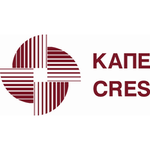Solar Energy
Flexible solutions for Solar Heat & Cooling. High temperature & energy storage for decarbonisation of the sector
Key Project: ASTEP
Application of Solar Thermal Energy to Processes (ASTEP) will create a new innovative Solar Heating for Industrial Processes (SHIP) concept focused on overcoming the current limitations of these systems. This solution is based on modular and flexible integration of two innovative designs for the solar collector (SunDial) and the Thermal Energy Storage (TES, based on Phase Change Materials, PCM) integrated via a control system which will allow flexible operation to maintain continuous service against the unpredictable nature of the solar source and partially during night operation.
ASTEP will demonstrate its capability to cover a substantial part of the heat demand of the process industry at temperatures above 150 ºC and for latitudes where current designs are not able to supply it. Its modularity and compactness will also enable easy installation and repair with reduced space requirements, while most of components can be sourced locally. The ASTEP`s process integration will allow full compatibility with the existing systems of potential end-users of SHIP. These aspects will provide a very competitive solution to substitute fossil fuel consumption. The developed solar concept will be tested at two industrial sites to prove the objective’s target of TRL5. Life Cycle Analysis will be included to validate and demonstrate the efficiency of the proposed technologies.
The first Industrial Site of the proposal is the world’s leading steel company, ArcelorMittal, with a heating demand above 220 ºC for a factory located at a latitude of 47.1 N (Iasi, Romania). The second site is the dairy company MANDREKAS, located at a latitude of 37.93 N (Corinth, Greece) with a heating demand for steam at 175 ºC and a cooling demand at 5 ºC. These test locations will validate the ASTEP solution for a substantial part of the potential requirements of industrial heating and cooling demand of the European Union (EU28), which is estimated at approximately 72 TWh per year.
Funded by the European Union. Views and opinions expressed are however those of the author(s) only and do not necessarily reflect those of the European Union or the granting authority. Neither the European Union nor the granting authority can be held responsible for them. This project has received funding from the European Union’s Horizon 2020 Research and innovation action (RIA) under grant agreement No 884411.

Funded by
the European Union
Upcoming Events
561 Experts
213 Organisations
44 Countries
ASTEP Project Video




















